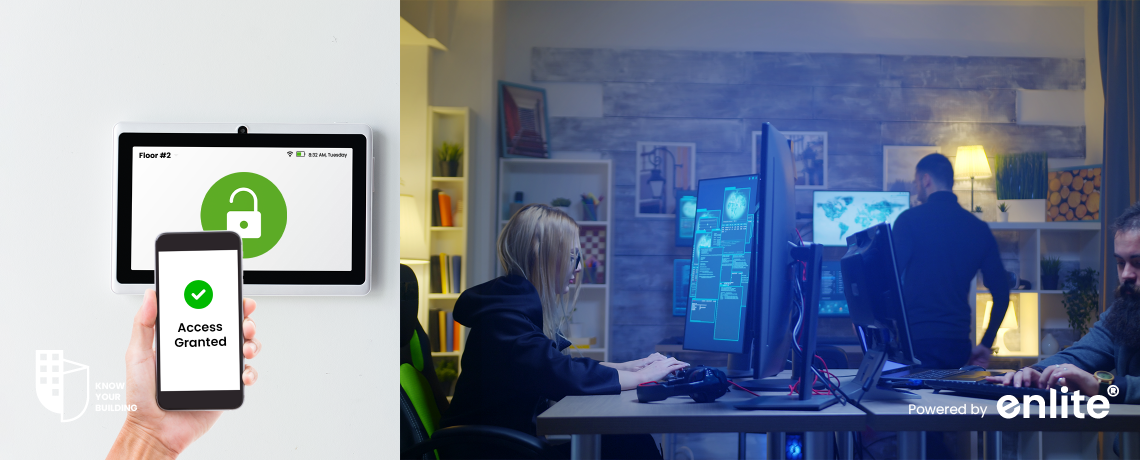Data Insights:
- 45% of building-related injuries occur due to inadequate safety systems, highlighting the need for advanced solutions.
- The global building safety systems market is expected to grow by 8.7% annually, driven by the demand for smart, secure, and automated systems.
- BMS-enabled security features have been shown to reduce building-related security incidents by up to 35%.
Introduction: The Role of Building Management Systems in Safety and Security
Building Management Systems (BMS) are no longer just tools for optimizing energy efficiency or enhancing occupant comfort—they are becoming integral to the safety and security of commercial buildings. In a rapidly evolving technological landscape, BMS solutions are revolutionizing how buildings respond to safety and security threats. From advanced surveillance systems to automated emergency responses, BMS is enhancing building resilience in unprecedented ways.
How BMS Improves Building Safety and Security:
- Integrated Fire Safety Systems:
- BMS integrates fire detection, alarm systems, and emergency response protocols.
- Automated fire detection triggers immediate notifications, evacuation protocols, and system shutdowns to ensure rapid response and minimized damage.
- Access Control and Surveillance:
- BMS enables smart access control, monitoring employee or visitor entry through RFID cards, biometric scans, or mobile apps.
- Integrated CCTV surveillance within the BMS ensures real-time monitoring of building perimeters and critical areas, allowing security personnel to respond to threats efficiently.
- Emergency Alerts and Notifications:
- In case of fire, intrusion, or medical emergencies, BMS can send real-time alerts to security personnel, management, and emergency responders.
- Automated emergency lighting systems and exit door unlocking ensure occupants can evacuate safely and efficiently.
- Intrusion Detection:
- Motion detectors and door/window sensors integrated into BMS systems can detect unauthorized access or movement within restricted areas.
- Suspicious activities trigger real-time alerts to security staff, ensuring swift action.
- Remote Monitoring:
- BMS enables 24/7 remote monitoring of building systems, ensuring security even during off-hours.
- Mobile apps and cloud-based platforms allow security teams to monitor and control systems from anywhere, enhancing their ability to respond promptly to incidents.
- Environmental Hazard Detection:
- BMS systems are capable of detecting environmental hazards such as gas leaks, flooding, or hazardous chemicals.
- Early detection and automated responses (such as shutting down HVAC systems or triggering alarms) prevent potential disasters.
- Health and Safety Compliance:
- BMS helps in ensuring buildings comply with health and safety regulations, such as ensuring proper ventilation, air quality, and temperature.
- Real-time monitoring of indoor air quality ensures that harmful pollutants are detected early, contributing to a healthier and safer environment.
- Automation of Routine Safety Checks:
- Regular safety and security checks—like testing fire alarms or monitoring access logs—are automated with BMS systems, reducing human error and increasing consistency.
- Automated reporting features provide building managers with detailed logs of safety and security performance, ensuring compliance with safety standards.
- Enhanced Disaster Preparedness:
- BMS supports disaster management by triggering pre-programmed evacuation routes, fire suppression systems, and emergency communication networks.
- Integration with weather tracking systems can also prepare buildings for natural disasters by automating preventive measures like shutting windows, activating storm shutters, or adjusting HVAC systems.
- Continuous Improvement:
- Through data analytics, BMS systems continually analyze safety and security incidents, providing valuable insights that can be used to improve protocols.
- Performance trends allow building managers to identify vulnerabilities and implement proactive security measures.
Key Benefits of BMS for Building Safety and Security:
- Enhanced Risk Management: Proactively detects and mitigates risks, minimizing damage and injuries.
- Faster Emergency Response: Automation ensures swift and accurate responses to emergencies.
- Lower Operational Costs: Automation reduces the need for manual security interventions, leading to cost savings.
- Improved Compliance: Ensures buildings adhere to safety regulations and standards.
- Peace of Mind: Occupants, employees, and building managers can trust that the building is continuously monitored and protected.
BMS as the Future of Building Safety and Security
The role of Building Management Systems in ensuring building safety and security is undeniable. From preventing potential disasters to enhancing emergency responses, BMS systems offer a comprehensive, automated, and intelligent approach to building safety. By integrating advanced surveillance, access control, and environmental hazard detection, BMS is transforming how we manage building security, making it more efficient, reliable, and responsive.
With the rise of cloud-native BMS and wireless technologies, buildings are becoming safer and smarter than ever before. As a result, BMS is playing a pivotal role in shaping the future of building safety and security.














